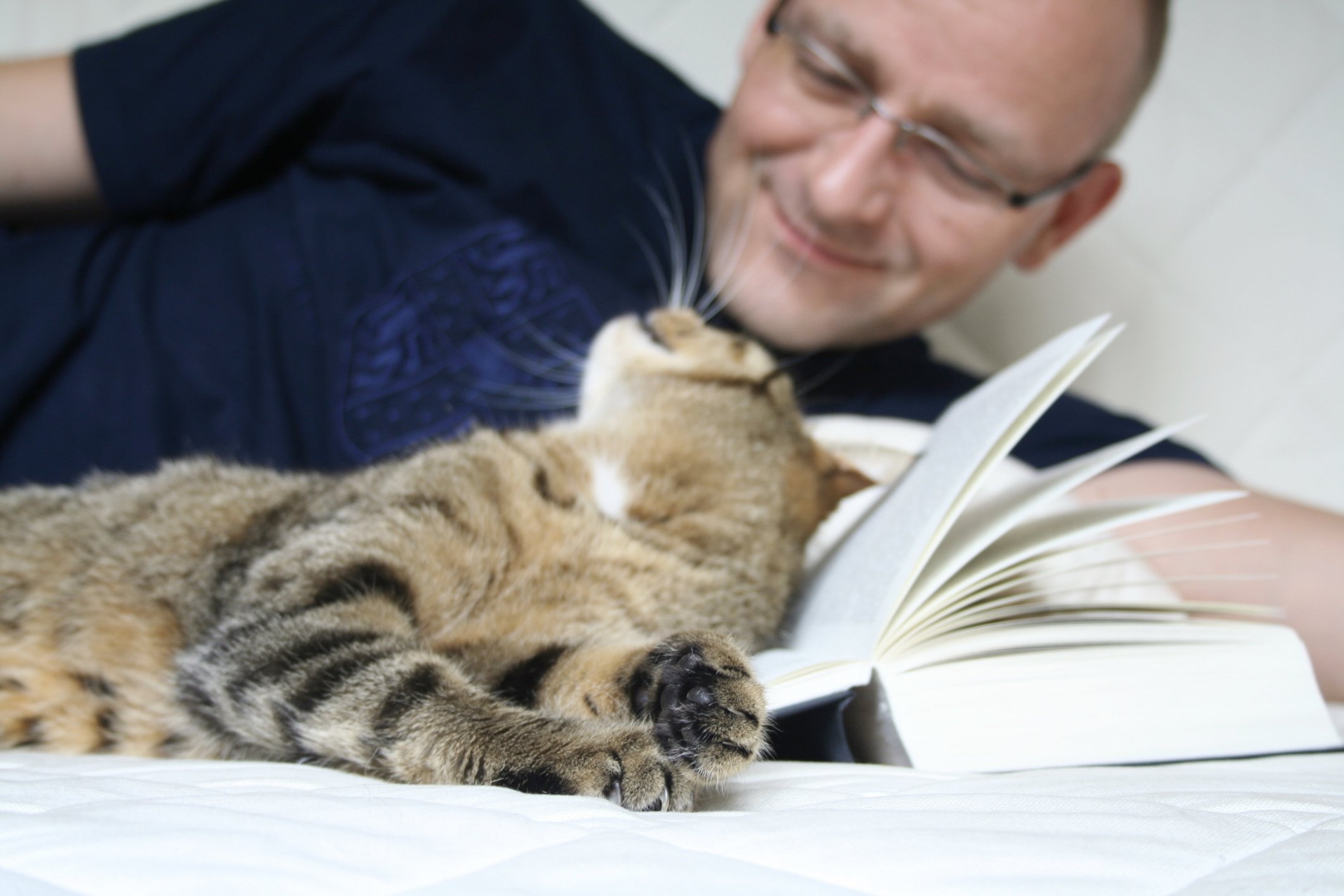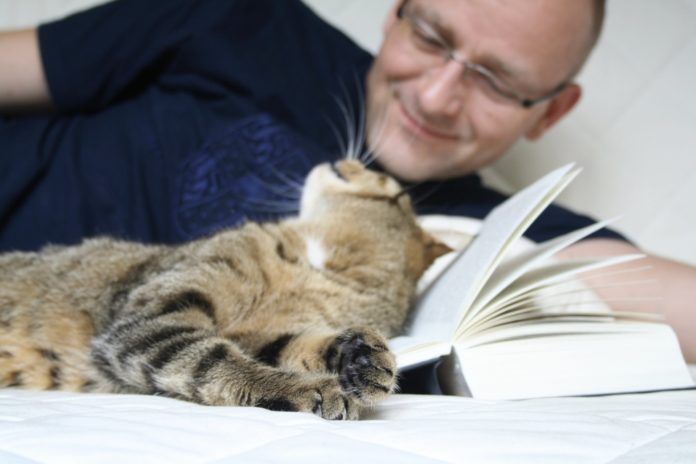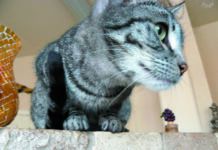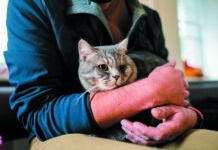THINKSTOCK


The health conditions that involve the lower urinary tract (the bladder and urethra) in cats are commonly referred to as feline urinary tract disease (FLUTD). FLUTD is not a disease in itself, but actually a variety of diseases that affect the lower urinary tract. They usually present similar clinical symptoms, which can complicate the specific diagnosis.
Further confounding the situation are those cats who show clinical signs of FLUTD, yet an underlying structural cause — such as bladder stones or a bladder tumor — has not been identified. This condition is called Feline Idiopathic Cystitis (FIC). Experts feel that it is similar to the human condition, “interstitial cystitis,” and studies are now shedding light on a new, novel approach to managing this frustrating condition.
Symptoms to observe
As the name implies, FIC is a disease with unknown origin or cause. Some of the symptoms include urinating outside of the litter box, painful urination (a cat may cry out), increased frequency of urination, blood in the urine, urethral blockage and overgrooming, particularly the lower abdomen and between the hind legs.
“More recently, people have started looking at the etiology of FIC issues,” says Cailin Heinze, VMD, MS, DACVN, assistant professor of nutrition at the Cummings School. “More and more data suggest a strong correlation between cats with FIC and elevated stress levels due to their environment. This would include cats that don’t get along with other cats in the household, cats that are more anxious, less involved in household activities or those that hide away.”
Chronic FIC is prevalent among cats that are young to middle-aged, overweight, less active, and who live in an indoor environment with stressors that can include conflict with other household cats. It affects males and females equally, but male cats more commonly experience urethral obstruction — a life-threatening situation.
As an owner, it’s really important to understand multicat cohabitation from the cat’s perspective and not just your own. Reducing stress in the cat’s environment is key to her overall health and quality of life. There are beneficial layers of environmental enrichment that cat owners can implement in their homes. Obviously, the most important is to provide ample cat necessities (food, water, litter boxes and adequate personal space), positive interaction, affection and play.
Improving the environment
Because indoor cats have little control over their environment, it’s ideal if you can set up additional outposts for food, water, litter boxes, toys and scratching posts in more than one area of the home so the cat can choose. In multicat households, the provision of duplicate resources can help maintain the peace by eliminating the threat of resource guarding, for instance.
All cats require individual space for scratching, sleeping, climbing and quiet retreat. Vertical space is a feline preference and most homes have ample amounts of unused vertical space for climbing shelves, a raised walkway, window seats, hammocks, or even cushions placed atop a wardrobe. For a safe, refreshing outdoor experience, consider enclosures in the yard, around decks, patios or windows.
Spending special time
Spending quality time with indoor cats is important in alleviating boredom, and it also strengthens the human-animal bond. Some cats prefer a grooming, petting or cuddle session, while others may enjoy robust play that mimics the hunting experience.
Conflict in the household can arise when cats feel their safety and control over their environment is threatened. Because indoor cats have limited control over their environment, some may lash out when threatened, while others withdraw. Conflict may be between other cats, other pets, children or even adults in the home. “Many owners don’t recognize the signs that their cats don’t have a good relationship. We can usually tell when people are stressed, but we’re not very good at recognizing when cats are stressed,” says Dr. Heinze. Of course, normal conflict exists in all relationships, but once owners recognize the signs of unhealthy conflict, steps can be taken to minimize it. (See related sidebar on this page.)
Cats aren’t keen on change in their environment whether that involves a change in food, construction, a new baby, a new home, or simply having guests over. Provide a stable environment by trying to minimize daily changes, and maintain a reliable routine, such as keeping a set feeding time.
Diet in a supporting role
According to Dr. Heinze, a common approach to managing FLUTD by diet in the past was simply to “feed a canned food.” While today’s focus is shifting towards reducing environmental stress, diet may still play a supporting role in the management of FIC. “There are a couple of new diets on the market formulated with profiles towards urinary tract health that also address the more prominent thought of reducing stress. The new ‘calming’ diets (Hill’s Prescription Diet c/d Multicare Stress and Royal Canin Veterinary Diet Calm) include a special type of milk protein, believed to be similar to the home remedy of glass of warm milk at bedtime to help you sleep that your mother or grandmother may have recommended,” says Dr. Heinze.
Increased water consumption as part of the diet is always important when dealing with the bladder and kidneys, says Dr. Heinze. “The less time the urine stays in the bladder, the less irritating it will be and the lower the risk of developing stones or crystals. In general, encouraging cats to drink more water and to eat at least a portion of their diet from canned food may make a difference. However, if they’re having clinical signs because of high stress in the household, feeding all the canned food in the world may not make any difference if the stressors haven’t been addressed,” says Dr. Heinze.
Pheromones may be helpful
After the environmental enrichment changes have been made, the use of synthetic pheromones may enhance the environment. The synthetic pheromones mimic the cat’s natural facial pheromones and provide a sense of calm and ease. The pheromones come in two forms, either a room diffuser or spray bottle. While the use of pheromones hasn’t been tested specifically on cats with FIC, treatment has been reported to reduce stress and anxiety in some cats. However, experts feel that the use of pheromones will not work without implementation of environmental enrichment, as well.
“Originally we treated FLUTD and FIC like it was all diet related,” explains Dr. Heinze. “But now we’re realizing it’s a lot more complicated than that. It has become a holistic, multi-pronged approach to provide environmental enrichment and modify the diet.” — Ramona Marek, Ms Ed.




